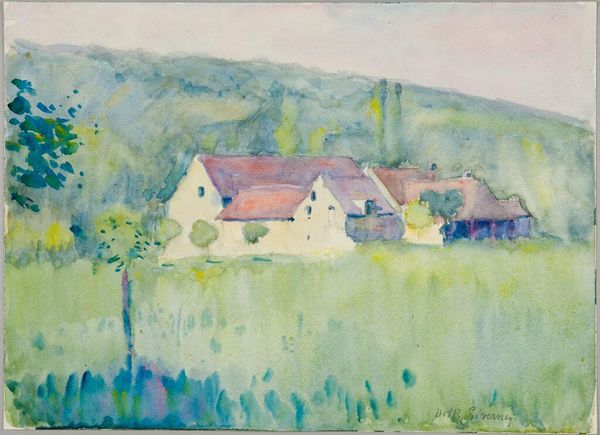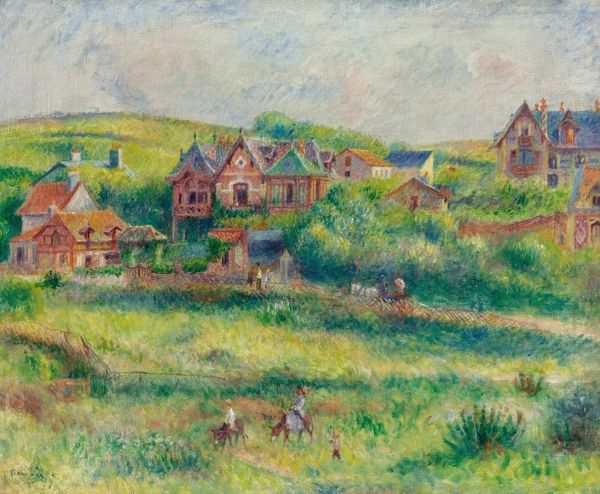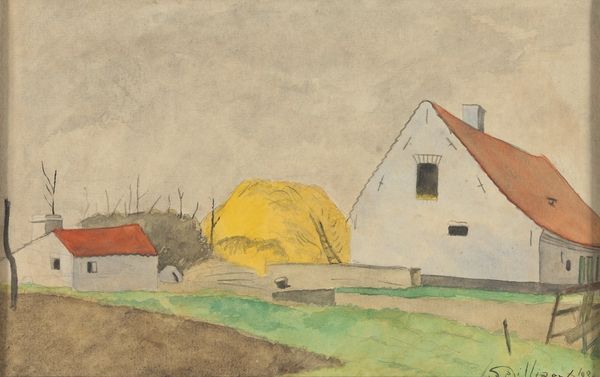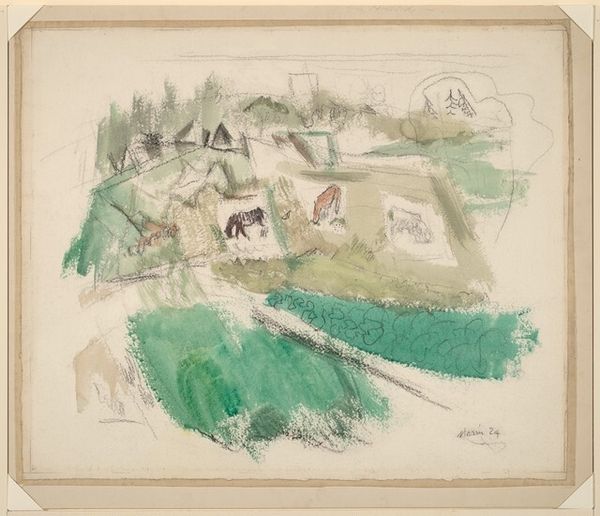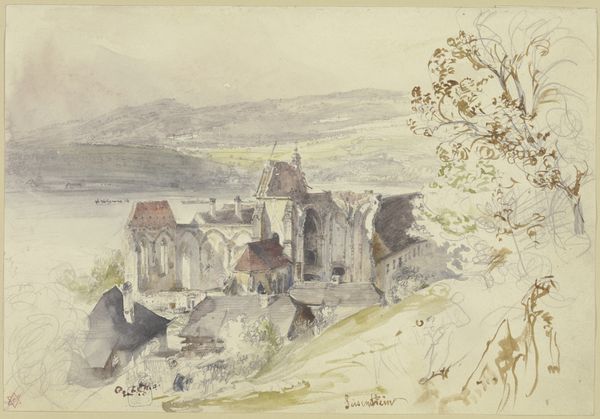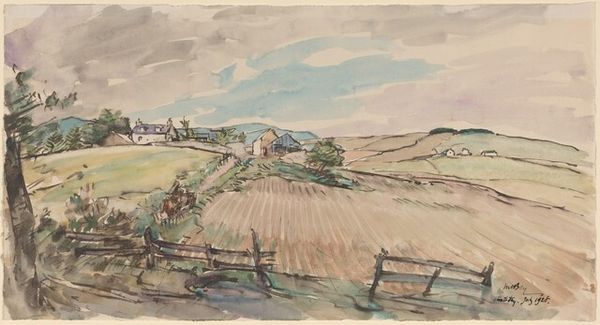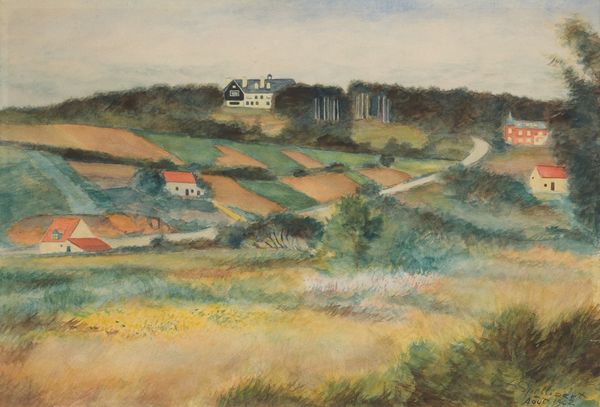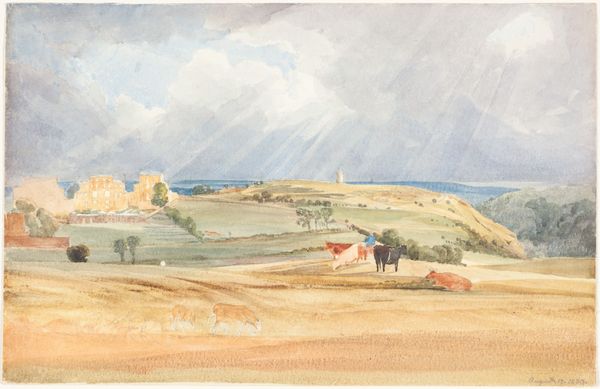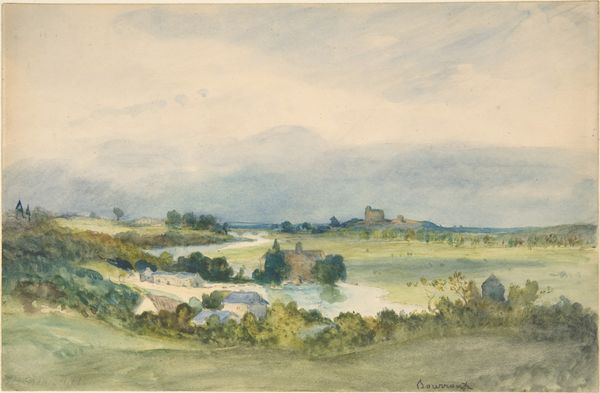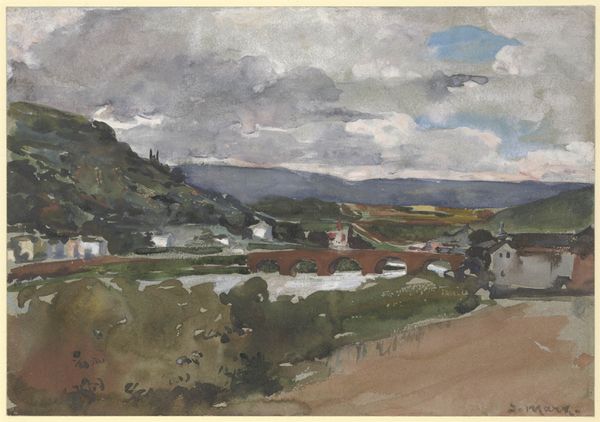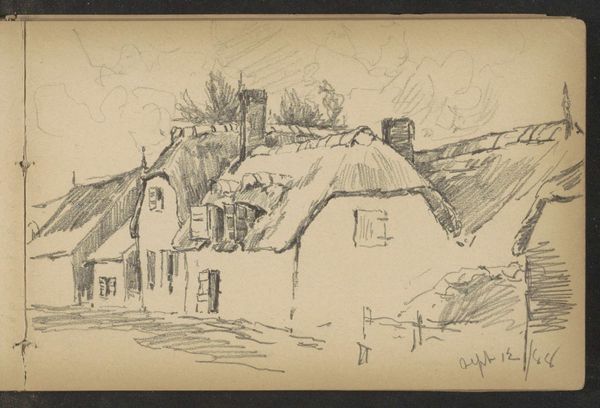
painting, plein-air, watercolor
#
painting
#
impressionism
#
plein-air
#
landscape
#
watercolor
#
watercolor
Copyright: Public Domain: Artvee
Curator: Ah, the Pissarro watercolor, "La ferme à Châtillon-sur-Seine," dating from 1884. What are your initial impressions? Editor: Light. Airy. It almost dissolves before my eyes. The subtle gradations in tone, especially in the hillside, are lovely, creating a serene and idyllic rural scene. Curator: Absolutely. Note how the medium, watercolor, allows Pissarro to capture the transient effects of light and atmosphere. He employs "plein-air" techniques here; one senses his direct observation and engagement with the materiality of rural France. The production and availability of new pigment colors would have expanded his palette too. Editor: Yes, I agree. There's a definite emphasis on capturing a fleeting moment, evident in the rapid brushstrokes and unfinished quality. It feels less about solid form and more about conveying the ephemeral experience of being there. The relationship of tones establishes the relationships among all of its parts, which is harmonious to the senses. Curator: It’s interesting to consider how these landscape scenes served a consumer market increasingly detached from agricultural labor, too. The rise of urbanization changed how paintings were made and interpreted. Who do we imagine might have bought the art depicting laborers at a distance? Editor: It’s about a certain vision, the semiotics of leisure. The painting's composition—the gentle curves, the balanced distribution of elements—creates a sense of visual harmony and repose, which suggests an intended upper-class viewing experience. What is left unsaid becomes essential. Curator: The figures themselves also warrant attention. Notice the peasant woman tending to the chickens. Their forms echo those of their surroundings. He integrates the human form and activity within this environment, depicting her labour, the raising of animals for a social function, as an innate extension of rurality. Editor: Agreed, though it's also worth noting how simplified those figures are. They are there, almost gestural—it's as though Pissarro doesn't grant her too much distinct visual weight. In semiotic terms, they function primarily to enhance the rural atmosphere; in effect, to set a stage rather than star in a scene. Curator: Ultimately, the value of his approach in this 1884 artwork comes from its emphasis on lived experience; capturing the social climate; and representing agricultural subjects with Impressionistic sensibilities. Editor: And formally, it is that fleeting glimpse and visual concord. He uses watercolours with the formal devices of the tonal scales. Both, really, leave me reflecting on the artist's vision as revealed by technique and time.
Comments
No comments
Be the first to comment and join the conversation on the ultimate creative platform.
